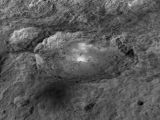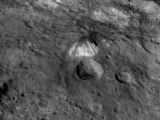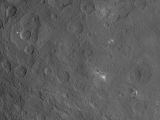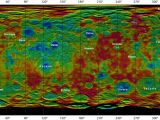NASA's Dawn probe reached nearby dwarf planet Ceres and positioned itself in its orbit earlier this year, on March 6. It's been imaging the orb's surface ever since and has even gathered enough data for mission scientists to manage a map revealing local landscapes.
Recently, the spacecraft turned its instruments on one of the dwarf planet's most prominent geological features: a funny-looking mountain that kind of, sort of resembles a cone or maybe a pyramid.
The mountain, revealed in the images included in the gallery and in the video below, stands about 4 miles (roughly 6 kilometers) tall. This makes it about the same elevation as Mount McKinley in Alaska's Denali National Park, NASA scientists say.
What's rather peculiar about this alien mountain on Ceres is that, at least in the views so far delivered by the Dawn spacecraft, one of its sides appears stunningly bright while the other is rather dark. Besides, its formation is, at least for now, a mystery.
“This mountain is among the tallest features we've seen on Ceres to date,” researcher Paul Schenk said in a statement. “It's unusual that it's not associated with a crater. Why is it sitting in the middle of nowhere? We don't know yet,” he went on to add.
Not the only bizarre feature on Ceres
Dwarf planet Ceres, described by scientists as the largest object in the main asteroid belt between Mars and Jupiter, holds plenty of other mysteries that NASA's Dawn probe is yet to sort out.
For instance, one of the craters in its northern hemisphere, named Occator after a Roman agriculture deity, displays a collection of spots that appear much brighter than their surrounding landscapes.
Like the newly discovered mountain that is half bright and half dark, it is clear that the Occator crater displays these peculiar spots because some of its regions reflect light differently than the others. However, the exact composition of these regions has not yet been determined.
“The science team is continuing to evaluate the date and discuss theories about these bright spots at Occator. We are now comparing the spots with the reflective properties of salt, but we are still puzzled by their source,” said scientist Chris Russell in an interview.
In a few days, Dawn will move even closer to Ceres and hover over its surface at an altitude of just 900 miles (about 1,500 kilometers). This will allow it to produce even more detailed images of its surface.
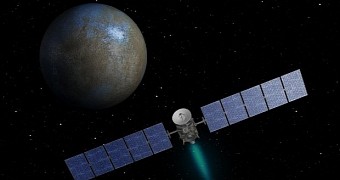
 14 DAY TRIAL //
14 DAY TRIAL // 

